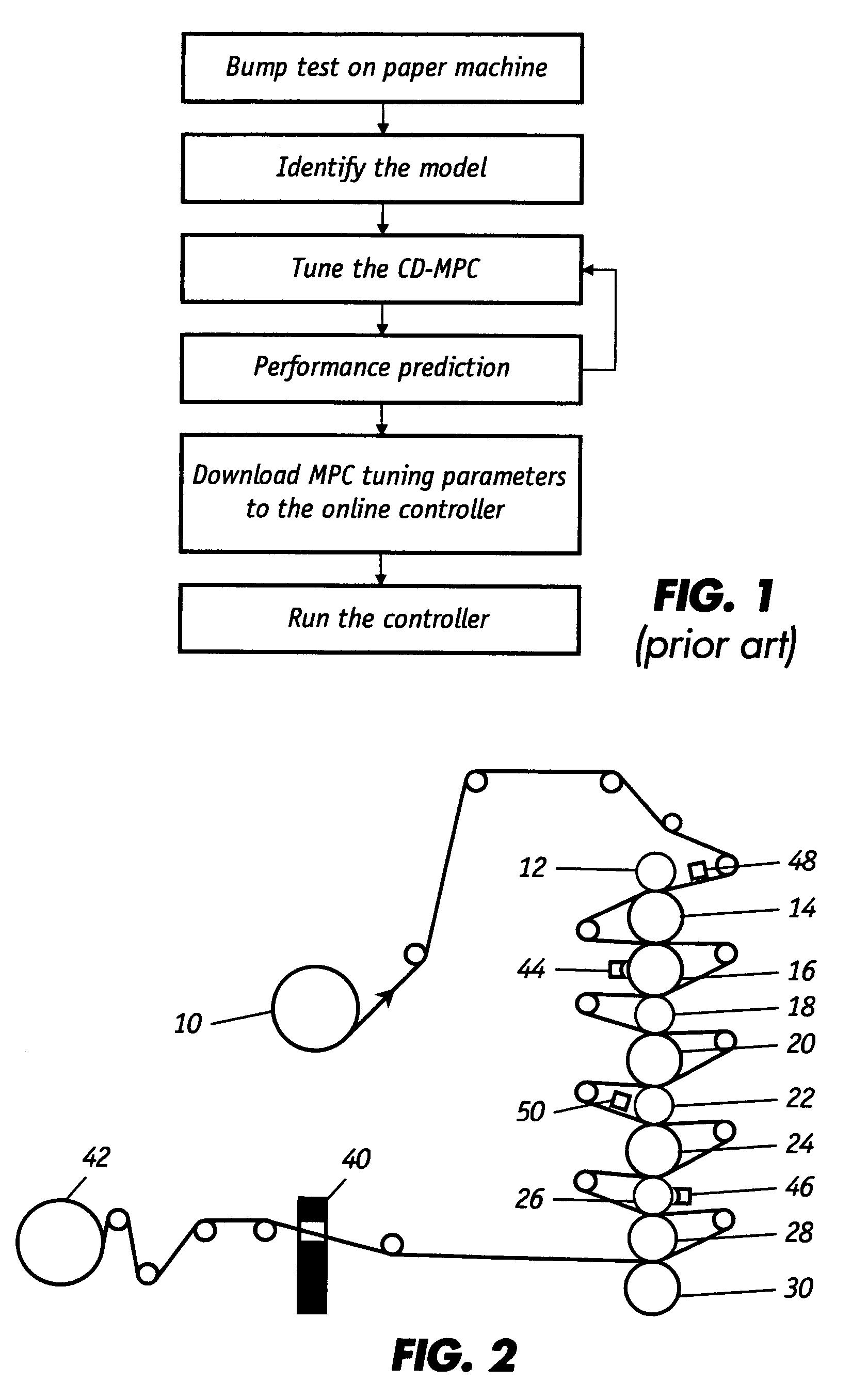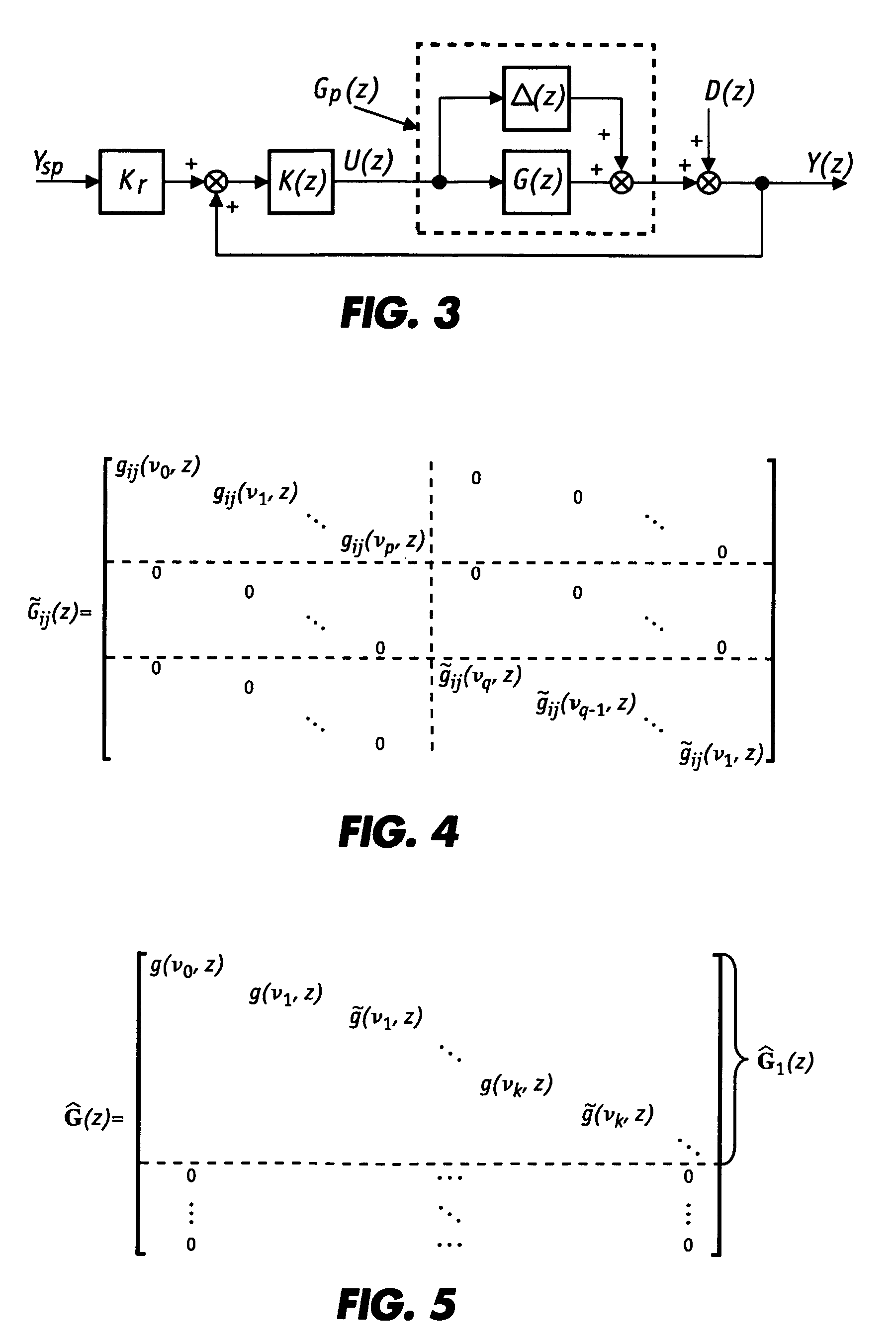Automated tuning of large-scale multivariable model predictive controllers for spatially-distributed processes
a multivariable model and process technology, applied in the direction of process and machine control, adaptive control, instruments, etc., can solve the problems of difficult control of processes, affecting the performance of processes, and often neglected interaction of multiple array cd processes in traditional cd control
- Summary
- Abstract
- Description
- Claims
- Application Information
AI Technical Summary
Benefits of technology
Problems solved by technology
Method used
Image
Examples
example
[0132]The CD process in a supercalender from a paper mill was used as the example which is difficult to be controlled by the traditional CD controller. FIG. 9 shows the singular values of the process model at steady-state in the spatial frequency domain. It is evident that the ill-conditioning of the process model is due to both the directionality of multiple actuator array and measurement arrays in the low spatial frequency range and low gains in the high spatial frequency range. After tuning, the sensitivity functions for each measurement at steady-state in the spatial frequency domain are shown in FIGS. 10a, b, and c while the sensitivity functions at zero spatial frequency in the temporal frequency domain are illustrated in FIGS. 10d, e, and f.
[0133]In industry, twice of the 2-norm of the error profile between the measurement profile and the target profile (2-sigma) is considered as the controller's spatial performance index. FIG. 11 shows the temporal performance by running th...
PUM
 Login to View More
Login to View More Abstract
Description
Claims
Application Information
 Login to View More
Login to View More - R&D
- Intellectual Property
- Life Sciences
- Materials
- Tech Scout
- Unparalleled Data Quality
- Higher Quality Content
- 60% Fewer Hallucinations
Browse by: Latest US Patents, China's latest patents, Technical Efficacy Thesaurus, Application Domain, Technology Topic, Popular Technical Reports.
© 2025 PatSnap. All rights reserved.Legal|Privacy policy|Modern Slavery Act Transparency Statement|Sitemap|About US| Contact US: help@patsnap.com



